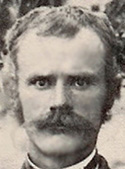Glossary of Dental Terminology
-A-
Abscess – infection caused by severe decay, gum disease or trauma.
Abutment – a tooth or implant used to support an artificial tooth restoration
Amalgam – a mixture of silver and mercury that has been used for fillings since the mid 1800s. Expands and contracts over time eventually damaging or fracturing the tooth. Definitely not part of aesthetic dentistry.
Anesthetic – a drug that is administered to you by a doctor, that puts you or a particular part of your body to sleep so that you do not feel pain during medical procedures.
Anterior Teeth – the teeth in the front of your mouth (centrals, laterals, and cuspids).
Antiseptic – a chemical agent which can be applied to living tissues to destroy germs.
-B-
Bleaching – A simple yet effective and affordable procedure which uses carbamide peroxide or hydrogen peroxide to lighten dark or stained teeth. We offer professionally supervised at-home treatments or an accelerated in-office process.
Bonding – process in which a composite resin is layered onto the teeth, cured with a harmless, high-intensity light, and then sculpted to the desired shape. Go to Bonding procedure.
Bridge – one or more artificial teeth attached, usually on both sides, to crowns on adjacent teeth. It is used to maintain space and function for missing teeth. Go to Bridge procedure.
Bruxism – unconscious clenching or grinding of your teeth, done most often at night. Go to NTI device.
-C-
Calculus – also known as tartar or tarter, calculus is hardened plaque that forms when you do not regularly brush and floss your teeth.
Canine – another name for cuspids, canine teeth are the pointy teeth just behind the laterals.
Cap – slang term for Crown.
Caries – commonly used term for tooth decay.
Cavity – decomposition of tooth caused by caries.
Cementum – hard connective tissue covering the tooth root.
Centrals – the two upper and two lower teeth in the center of your mouth.
Crown – an artificial tooth, or an artificial cover for a tooth made of porcelain or metal used to repair a decayed or damaged tooth. Go to Crown procedure.
Cuspid – pointed teeth just behind the laterals, also known as canines.
-D-
Decalcification – the loss of calcium from your teeth which makes them more susceptible to decay.
Deciduous Teeth – your primary or “baby teeth”.
Dental Implant – used to replace missing teeth. Implants consist of 3 parts – a special crown, a post, and an anchor embedded in the jawbone. Can also be used to anchor bridges or dentures.
Dentin – the middle part of the tooth surrounding the pulp and covered by enamel. Beige in color.
Denture – an artificial set of teeth that is usually removable.
-E-
Enamel – a natural, hard substance that protects the portion of your teeth above the gum-line.
Extraction – the removal of teeth (may be simple or require surgery).
-F-
Fillings – restoring of lost tooth structure by using materials such as: metal, alloy, cement, porcelain or synthetics.
Flipper – Slang term for a small, removable, acrylic partial denture.
Fluoride – a chemical solution that you put on your teeth to harden them and prevent tooth decay.
-G-
Gingivitis – early stage of periodontal disease caused by plaque or tartar build up. Gingivitis is characterized by red, swollen gums that bleed during brushing. Often there is also a bad mouth odor, or halitosis.
Gingivectomy – a relatively minor type of periodontal surgery that involves the removal of a small amount of gum tissue around one or more teeth. Procedure is used in periodontal therapy to remove diseased tissue. It is also used to simply improve aesthetics.
Gums – pink tissue surrounding teeth
Gum Recession (Receding Gums) – another form of gum disease in which the gum tissue has eroded away from the teeth producing a ‘toothy’ smile and eventually exposing the root. Go to Gum Tissue Grafting procedure.
-H-
Halitosis – medical term for bad breath caused by tooth decay, gum disease, digestive problems, smoking or some systemic diseases. Saliva is the key to breath odor control. Decreased salivation causes pH levels to rise, allowing the bacteria which produce bad breath to multiply dramatically.
Home Care – daily routine of brushing and flossing to keep teeth and gums healthy between dental cleanings. May involve use of special tools if teeth and gums are affected by periodontal disease.
-I-
Impacted Tooth – usually associated with a wisdom tooth, it is a tooth that has somehow gotten stuck so that complete eruption is unlikely.
Implant – used to replace missing teeth. Implants consist of 3 parts – a special crown, a post, and an anchor embedded in the jawbone. Can also be used to anchor bridges or dentures.
Incisors – (central and lateral) the eight front teeth used for cutting food.
Invisalign – a system of removable plastic liners used to move and straighten teeth. Go to Invisalign® procedure.
-L-
Laterals – incisor teeth on either side of the central incisors.
-M-
Malocclusion (bad bite) – abnormal contact between upper and lower teeth
Molars – back teeth used for grinding food. The furthest (third) molars are also known as wisdom teeth.
-N-
Night Guard – a plastic mouthpiece to prevent damage from grinding teeth at night. Go to NTI Tension Control Device
Nitrous Oxide (laughing gas) – widely used anesthetic approved for use in dentistry and other medical procedures.
-O-
Onlay – a custom-made porcelain filling. Usually used to restore teeth damaged by large silver-mercury fillings. Go to Onlay procedure.
Orthodontics – branch of dentistry that deals with the diagnosis of misaligned teeth.
Osteoporosis – a condition in which bones become fragile and more likely to break. 80% of those affected are women. Risk factors include low lifetime calcium intake, an inactive lifestyle, and estrogen deficiency as a result of menopause, especially early or surgically induced. Women can lose up to 20 percent of their bone mass in the 5 to 7 years following menopause, making them more susceptible to osteoporosis.
-P-
Partial (denture) – removable appliance which replaces one or more missing teeth. Erroneously referred to as a bridge. Also called a “flipper” when small and replacing only a few teeth.
Periodontitis – advanced stage of periodontal disease which involves the surrounding bone. Characterized by a receding of the gums, spaces opening between teeth, discomfort in the gums, and loosening of the teeth. Once know as “pyorrhea”.
Plaque – the sticky bacteria-laden film which constantly forms on the teeth and must be removed every day by brushing and flossing.
Pontic – portion of bridge or partial that holds the artificial tooth or teeth.
Posterior Teeth – the teeth in the back of your mouth (bicuspids and molars).
Primary Teeth – the first set of teeth that come in, also known as “baby teeth” or deciduous teeth.
Pulp – the soft, spongy tissue inside every tooth that contains the tooth’s nerve and blood supply.
-R-
Resin – composite material that can be mixed to match tooth color. Applied in layers and hardened with high-intensity light. Used for tooth-colored fillings and cosmetic bonding procedures.
Root – the anatomic portion of the tooth that is covered by cementum and is located in the alveolus (socket) where it is attached by the periodontal apparatus.
Root Planing – a procedure designed to remove microbial flora, bacterial toxins, calculus, and diseased cementum or dentin on the root surfaces and in the pocket.
Root Canal – chamber within the root of tooth that contains the pulp.
Root Canal Therapy – procedure in which root canal is cleaned, shaped and filled. May involve placing a crown. Also called Endodontic treatment
-S-
Scaling – removal of plaque, calculus, and stain from teeth.
Sealant – plastic coating applied to grooves of teeth to prevent decay. Used almost exclusively on the biting surfaces of posterior, or back teeth. Go to Protective Sealant procedure
Secondary Teeth – your permanent teeth, the ones that come to replace your “baby teeth”.
Six Year Molar – also known as your first molar.
-T-
Tartar – salivary deposit of calcium phosphate, calcium carbonate, and organic matter on natural or artificial teeth. Also called tarter.
Third molars – The last of the three molar teeth, also called wisdom teeth. There are four third molars, two in the lower jaw and two in the upper jaw, one on each side. Some people are born without third molars.
TMJ Syndrome(Temporomandibular Joint Syndrome) – a misalignment of the joint connecting upper and lower jaw resulting in muscle and joint pain in the jaw area. It is also associated with general unknown facial pain. For some unknown reason there is a high occurrence in women.
Tooth Whitening – A process to lighten the color of teeth that usually involves some form of bleaching. We offer professionally supervised at-home treatments or an accelerated in-office process. Go to Tooth Whitening procedure.
Twelve Year Molar – also known as your second molar.
-V-
Veneer – A thin, custom-made porcelain shell which is permanently bonded to the front of a tooth to dramatically improve its position, size, color, and shape. Veneers are also a popular solution for severe tooth staining. This is a permanent and irreversible process because it’s necessary to remove a small amount of enamel from your natural tooth to accommodate the shell. Often called instant orthodontics, veneers can create a stunning smile. Go to Veneer procedure.









